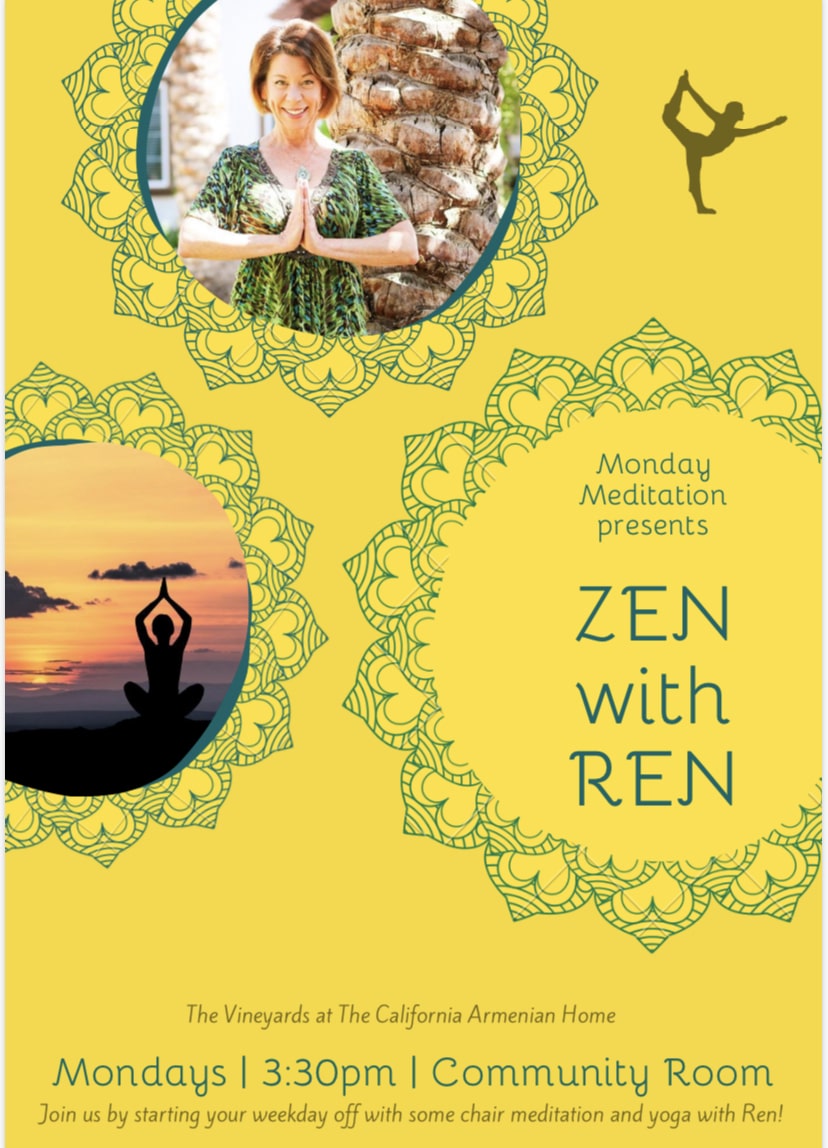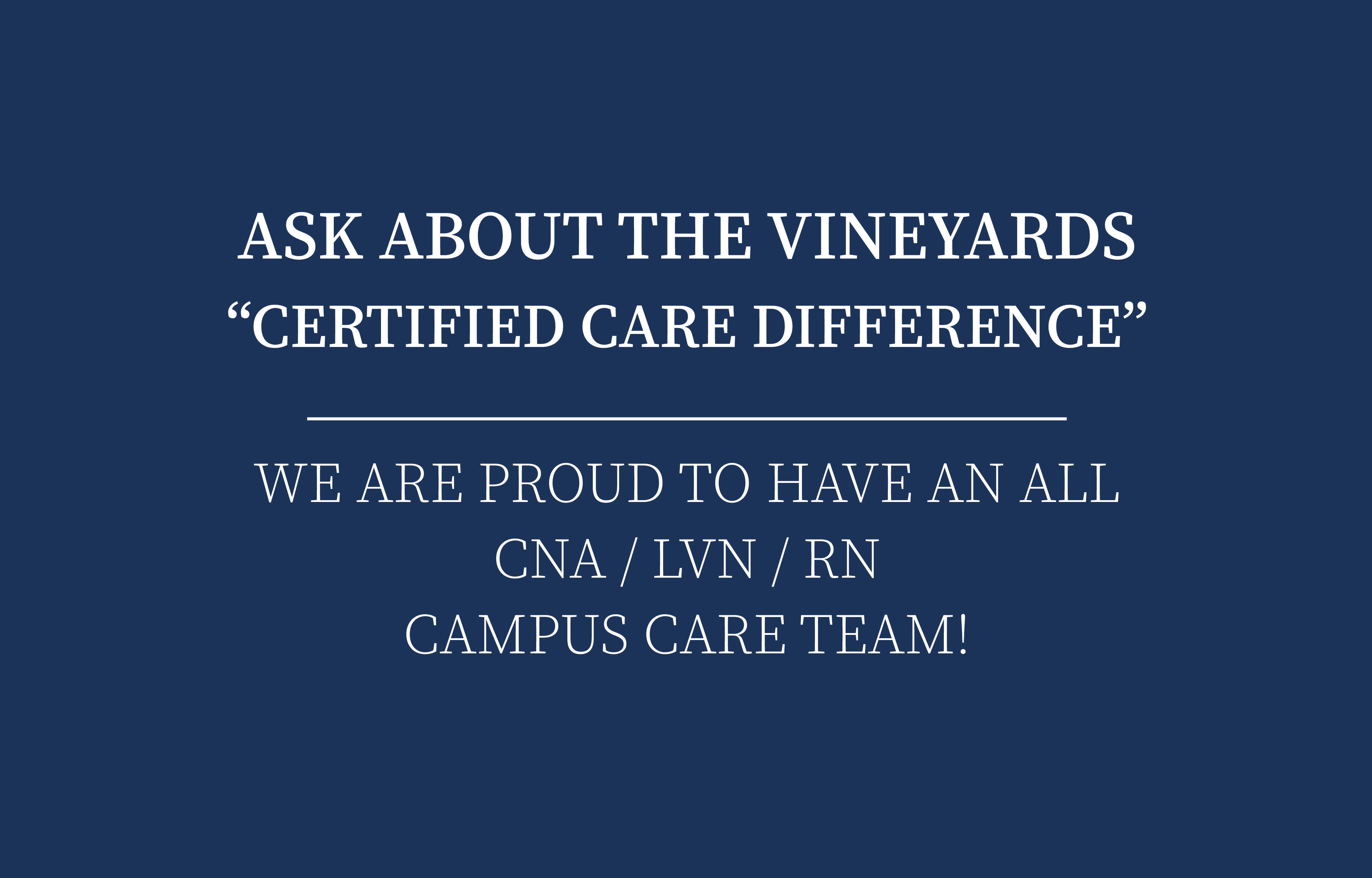Blog
Home Blog
Blogs
10 Senior Living Residences’ Questions you SHOULD Ask





When you hear the phrase “Senior Living” what do you imagine?
A. A resort-like lifestyle for folks who are 60 and older
B. An elegant cruise ship on land
C. A solution for the weary family caregiver
D. A respite for the lonely widowed
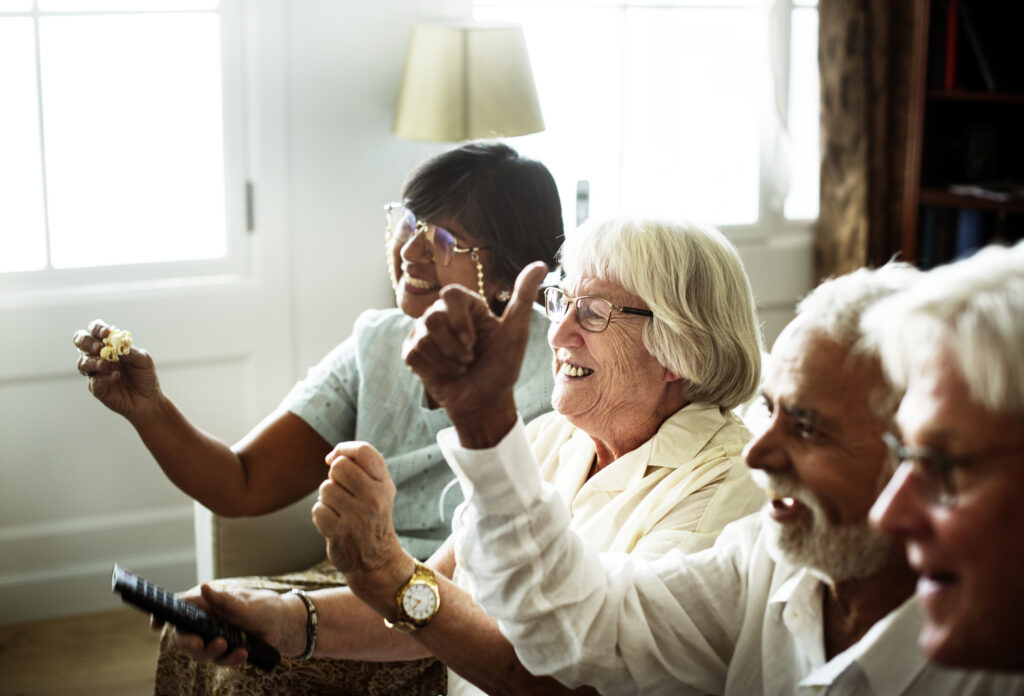
Senior Living is all of that and so much more. Especially in the past year as the senior living industry has navigated new challenges. Senior Living has continued to offer a sense of community for residents. This includes but is not limited to peer-to-peer friendships, healthy meals, and multi-generational activities, and social engagement. For many seniors and their adult children, isolation has become an all-too-common problem. Can you imagine how comforting it is to just walk outside the front door of your apartment and safely visit with neighbors?
The culture of each senior living community is unique. Just like each one of the seniors who reside inside.
10 Questions You Should Ask When Looking For A Senior Living Residence

There are a considerable amount of senior living residences in Fresno to choose from. That’s why it’s important to know what type of questions we should ask when looking for the right one. And that goes for them and ourselves.
Let us share with you a list of the most important questions we think you should ask, before deciding on a senior living residence.
#1 What Do All These Levels Of Care Mean?

The Senior Living Industry has its alphabet soup of acronyms. And when you are starting to look around they may seem confusing. Here’s a little list of the most common.
● IL: Independent Living (The person can perform all activities of daily living on their own)
● AL: Assisted Living (Assistance with medication management, grooming, dressing, bathing, hygiene, or transferring is needed)
● MC: Memory Care (A Dementia diagnosis needs specific programs of support)
● SNF: Skilled Nursing Facility (Typically needed following a hospital stay)
● Rehab: Short term Rehabilitation, physical and occupational therapy
● RCFE: Residential Care Facility for the Elderly
● CCRC: Continuing Care Retirement Community
In the Fresno area, there are dozens of senior living options to choose from. Some are 100% Independent Living communities. Some are 100% Memory Care Facilities. Many others have a mix of two levels of care.
For instance, The Vineyards California Armenian Home offers the full continuum of care including Independent Living Villas and apartments, Assisted Living apartments, dedicated Memory Care, and an onsite skilled nursing facility with short term physical and occupational therapy. As with any housing decision you will want to consider your budget and your lifestyle. What senior community has the values, experience, and solutions for your circumstance?
#2 How Many Communities Should I Tour?

During most of the quarantine season, onsite tours were not available. As we move into 2021 tours are available thru Face time, Google Duo, Zoom, and in some cases back to in-person tours. Keeping residents safe is the priority.
You can learn a lot with a virtual visit! Remember, it is not just about the real estate part, it is about the programs inside.
There are 6-Bed homes that are often run by families with a more casual environment and simpler amenities. There are mid-size and larger communities that can offer an array of services and amenities as they have more residents, staff, and resources. Each senior living community will have its management style and culture.
Tour as many as you can until you find the one that feels like home. The final desired outcome is being comfortable, safe, and happy in a new home, with support, friends, and peace of mind.
#3 How Do We Know What Level Of Care Is Appropriate?

The Physicians Report 602A form is a reporting tool that a potential resident’s primary physician completes. It includes clinical information that helps to direct the senior living professionals as they perform their assessment. This form is available online and is accepted by all California Residential Care Facilities for the Elderly.
The information provides a snapshot of the individual’s physical health. This includes primary and secondary diagnoses. It also let us know if they have the ability to perform their activities of daily living, and what assistance they may need.
Once the 602A is reviewed by the facility’s director of care, an in-person assessment is performed. And of course, once a person moves into a senior living community the staff continues to become more familiar with the unique personality and ever-evolving needs of each resident. The goal is to keep residents as independent as possible for as long as possible. The plan of care is going to be tailored for each resident’s needs.
#4 What About Technology?

The Senior Living industry continues to adapt and change. Even though the technology is a positive disruptor, it cannot replace the community and person-to-person connection.
However, the tools that are being developed will enhance care and aging with dignity. Tech can help us preventing falls, and improving the quality of life. It can help both the resident and the staff.
The foundation and core of the industry are helping the senior accomplish security, certainty, and predictability.
There are many advances in technology that address cognitive needs. As we remove the fear of aging, we can all move forward together.
By continuing to have purpose and engagement, residents in senior living communities enjoy a higher level of daily satisfaction. This can include online courses, walkie-talkie Bingo, virtual concerts, and screen led exercise classes.
#5 What Kind Of People Choose To Work In Senior Living?

More professionals are choosing to work in the senior living industry, bringing with them dynamic ideas. This business requires empathy and strategic planning. The industry meets the needs of a growing population. We mentor staff to be leaders and the residents teach the younger generations.
When you consider the number of Senior Living communities that exist, you can only imagine the number of staff that are employed throughout the departments. When initially investigating senior living options you will meet with the community marketing team. Typically, these individuals will have had experience in some type of sales as they need to be fluent in storytelling. They truly enjoy being able to capture the magic of senior living and share it with you.
I never get tired of watching the same scenario: A senior moving in, who is scared and not too happy about the reality of getting older… And then seeing that same person bloom as they enjoy peer to peer friendships and thrive even more as each month passes. It is always amazing!
Figuring out what you do not know can be difficult. A Senior Living Advisor is trustworthy. Ask questions. Get answers.
There are staff members who work in the dining room and transition to caregivers and vice versa. The common denominator is that people who work in senior living understand that we are ladies and gentlemen taking care of ladies and gentlemen. With delicious food, fun activities, safe transportation, housekeeping, and kindness.
#6 Who Do I Talk To If There Is A Problem Once I Move In?

Most problems can be easily solved. This is the case in 99% of situations and industries. It is the same in senior living. Communication is key. From honey do’s for maintenance to care concerns, address your questions to the appropriate department manager or directly to the Administrator. If a satisfactory solution is not presented, there is also the Ombudsman program.
The website can be viewed on the Ombudsman page
Here is an overview of what they offer residents and their families.

#7 What If I Do Not Want To Drive Anymore?
You do not have to drive to continue enjoying your independence. Transportation is included in lifestyle options. Typically, the transportation is included in the monthly rent for doctor’s visits and personal appointments with weekly adventures and shopping included as well. All this is subject to the varying safety precautions of the county and state.

The great news is that you do not have to drive to do more of what you want to do! At The Vineyards California Armenian Home, our residents have so many choices each day. Get up early and have coffee with a neighbor at The Harvest Cafe? Sleep in and order room service? Enjoy a good book from the Grape Leaf book Nook library? Talk a walk around the gorgeous park? Throw a load of delicates in their very own washing machine?
Relax in the central courtyard under the palm trees. Stay cozy in the Fireside Room and watch a favorite soap opera. Plan a girl’s night out in the 3rd-floor bistro. Review the day’s event calendar and decide how busy or relaxed one wants to be.
#8 Who Pays For Senior Living?

Senior Living is primarily private pay. Senior Living communities may also work with Long Term Care Insurance for Assisted Living and Memory Care.
There is also an Air and Attendance program available for Veterans.
Am I eligible for VA Aid and Attendance or Housebound benefits as a Veteran or survivor?
Va Aid And Attendance Eligibility
Am I eligible for Veterans Pension benefits?
You may be eligible for the Veterans Pension program if you meet the requirements listed below.
Both of these must be true:
● You did not receive a dishonorable discharge, and
● Your yearly family income and net worth meet certain limits set by Congress. Your net worth includes all personal property you own (except your house, your car, and most home furnishings), minus any debt you owe. Your net worth includes the net worth of your spouse.
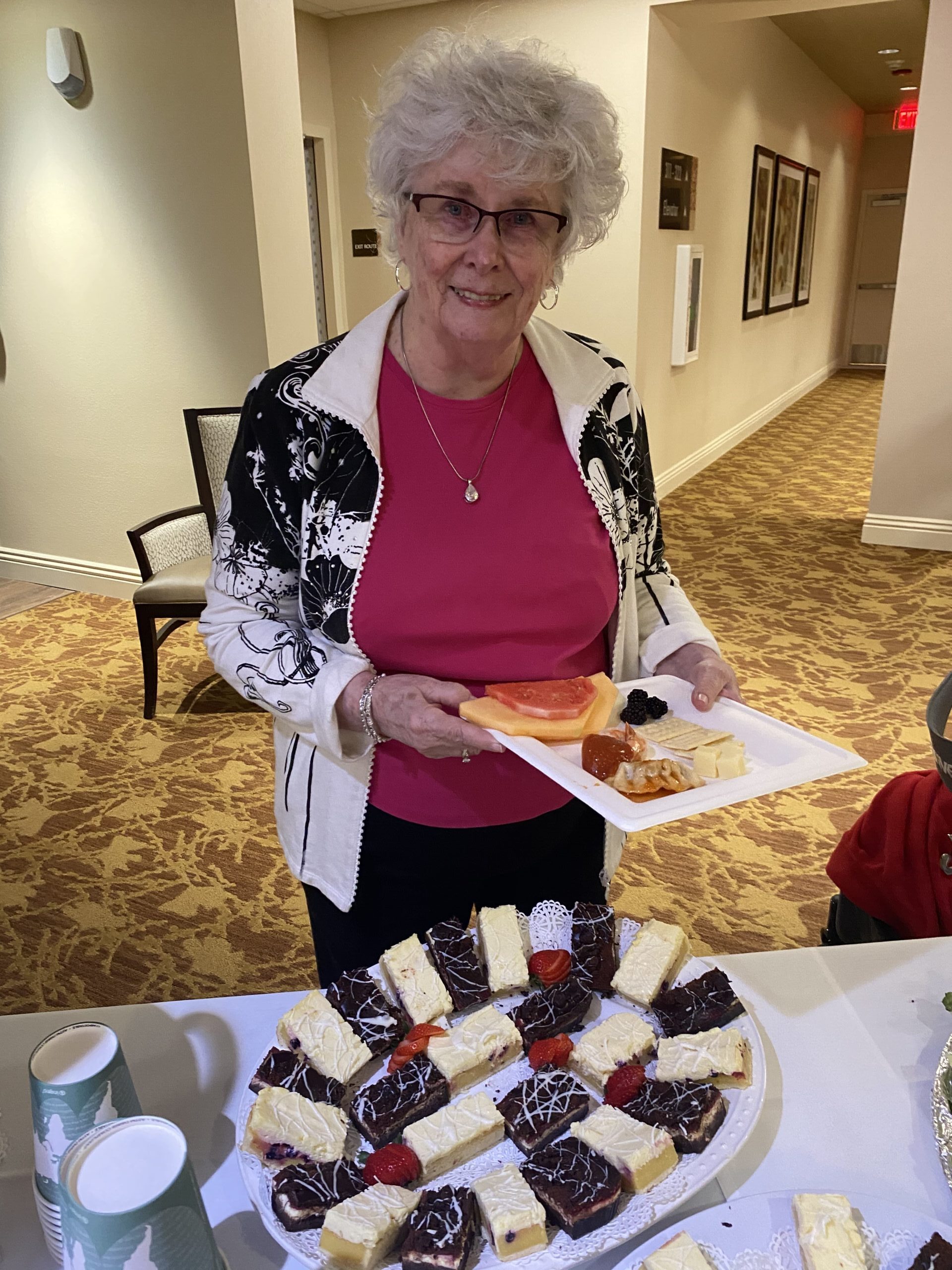
Find out about Veterans Pension rates. And at least one of these must be true about your service. You:
● Started on active duty before September 8, 1980, and you served at least 90 days on active duty with at least 1 day during wartime, or
● Started on active duty as an enlisted person after September 7, 1980, and served at least 24 months or the full period for which you were called or ordered to active duty (with some exceptions) with at least 1 day during wartime, or
● Were an officer and started on active duty after October 16, 1981, and you had not previously served on active duty for at least 24 months.
And at least one of these must be true. You:
● Are at least 65 years old, or
● Have a permanent and total disability, or
● Are a patient in a nursing home for long-term care because of a disability, or
● Are getting Social Security Disability Insurance or Supplemental Security Income
You may be eligible for this benefit if you get a VA pension and you meet at least one of the requirements listed below.
At least one of these must be true:
● You need another person to help you perform daily activities, like bathing, feeding, and dressing
● You must stay in bed—or spend a large portion of the day in bed—because of illness
● You are a patient in a nursing home due to the loss of mental or physical abilities related to a disability
● Your eyesight is limited (even with glasses or contact lenses you have only 5/200 or less in both eyes or concentric contraction of the visual field to 5 degrees or less
#9 Are They Going To Keep My Parents Safe?
Seniors are an especially vulnerable group when it comes to safety and health concerns. In recent surveys as noted on the seniorlifestyle.com blog, 91% of adult children with a parent in a retirement community were pleased with their parent’s safety and physical security.

● Elderly robbery victims are 53% more likely to be victimized in their own homes than younger victims. Among retirement community residents, 93% reported that they felt there was a safety net in place for them if something went wrong vs 60% of seniors living alone reported they were not prepared for an emergency.
● Seniors who engage in social programming are 26% less likely to develop dementia than those who live alone and seniors who live alone have a 59% higher risk of physical decline.
● In senior living community-dwelling adults, fall prevention programming led to a decrease in fall rates of 25%-40%. Whereas one in three seniors that live in private homes experience a serious fall each year.
● In a survey of seniors in senior living communities, 77% of participants say they eat healthier as a result of nutritional programming. Nearly one in six seniors struggle to feed themselves, drastically raising the risk of heart disease, asthma, and depression.
● In a study of 4000 seniors, 40% reported their sense of community as the most important contributor to their quality of life. Seniors living in isolation have up to a 90% increased risk of cardiovascular disease.
There are many safety variables to consider. Senior Living communities have notable advantages over living at home alone with a caregiver.
#10 When Do I Know I Am Ready?

We have a set of three questions that can help you decide:
● Are you (or your senior loved one) living a lifestyle that is healthy physically, emotionally, and socially?
● Do you and your spouse enjoy shopping and cooking delicious and nutritionally balanced meals?
● Do you enjoy doing laundry and changing your sheets? Do you enjoy cleaning your home and pulling weeds in the garden?
Are you answering no?
Perhaps it is time to start asking deeper questions.
● Is your house an asset or a burden?
● Do you only live in a couple of rooms in a large home?
● Have there been growing concerns about health issues?
● Are you lonely?
● Do you want to have more time to enjoy your interests and let go of some of the mundane household duties?
● Are there memory issues?
● Are you ready to relax and enjoy peace of mind?
Remember there are different chapters in life, and all of them bring new joys and learnings. Are you ready to begin a new one of personal freedom and support?
Conclusion
We hope you find the perfect place for you or your beloved one. Remember there are organizations and institutions ready to help. You are not alone.
Now it’s time for you to be proactive! This is about your health, your safety, and even your life. What other questions would you suggest to add to the list?
Let us know in the comments!
The Benefits of Exercise
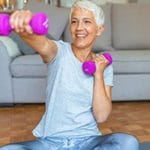 Over the years, it is easy to forget about exercise when it’s not routine. A recent study suggested that about 67 percent of older adults are sedentary for at least 8.5 hours each day. Making exercise fun as part of your routine can help in the long term, and there are numerous benefits you receive!
Over the years, it is easy to forget about exercise when it’s not routine. A recent study suggested that about 67 percent of older adults are sedentary for at least 8.5 hours each day. Making exercise fun as part of your routine can help in the long term, and there are numerous benefits you receive!
- Arthritis: Exercise is one of the most crucial options for arthritis management. Regular activity helps lubricate the joints and can help reduce overall pain and stiffness that is often present among individuals with arthritis. Moreover, obesity is a risk factor for the disease, and increasing physical activity levels can help better manage the debilitating symptoms of arthritis.
- Heart disease: Heart disease is one of the biggest causes of death in the United States. The Centers for Disease Control and Prevention state that about one in every four deaths is attributed to heart disease. More people exercising later in life can help reduce the number of individuals with heart disease through the management of blood pressure and blood glucose, and decreasing LDL cholesterol.
- Metabolic Dysfunction (type II diabetes and obesity): Type II diabetes and obesity are two closely related diseases in which the body is in metabolic dysfunction. Exercise can help maintain proper body weight and help regulate blood glucose and insulin levels to make the body more efficient.
- Cancer: Exercise has been shown to help improve overall cancer risk among a variety of different forms of cancer. Studies have shown a 30 to 40 percent reduction in breast cancer risk among women who perform moderate to regular exercise.
- Hypertension: Exercise can help lower systolic blood pressure significantly through moderate-intensity physical activity. Try breaking up exercise into three bouts throughout the day lasting for at least 10 minutes each to receive blood pressure–lowering effects.
- Depression: Exercise can have a beneficial effect on personal mood. Studies suggest that group exercise classes among older adults can help reduce symptoms of depression by 30 percent or more in exercising older adults. The modest improvement in depressive symptoms can help maintain an overall greater vitality later in life and help prevent negative feelings or thoughts that are common with aging.
- Dementia: Dementia is a disabling condition affecting many older adults. With a wide range of mental disorders categorized as dementia, there is a great need to understand how to prevent the condition. Exercise is one prevention strategy that can help slow the mental decline. A recent study showed a 37 percent reduced risk and a 66 percent reduction in risk of dementia when older adults performed moderate-intensity exercise, suggesting every adult ought to exercise to help lower the risk of mental decline and to help prevent mental disability later in life.
- Quality of life: Maintaining functional independence is something many older adults want. A regular exercise inclusive of strength and balance training can help accomplish this. Aim to be physically active for 30 minutes every day and to strength train at least two non-consecutive days per week.
- Insomnia: Certain medications and life events can prevent the body from proper sleep. Higher levels of physical activity can help exhaust the body enough to place it in a position for restful and lasting sleep. Avoid strenuous exercise two hours before bed to obtain these benefits, and aim to meet the daily activity recommendations.
- All-cause mortality: Exercise is known to reduce death from all causes. In fact, a recent study showed a 30 to 80 percent reduction in all-cause mortality when individuals exercised at an intensity level greater than 4 METS, suggesting that exercise can help delay premature death from various causes.
Iced Tea Benefits
From soothing stress to providing weird minerals you didn’t know you need, iced tea provides more than just a refreshing boost.
After water, tea is the most frequently consumed beverage in the world. Which makes sense; tea goes hand in hand with images of Asia, the United Kingdom, India, Russia. But how about here in the old United States of America? It might not seem like we have a booming tea culture, but the fact is that on any given day, more than half of the American population drinks tea. But here’s the twist: 85 percent of that tea is served on the rocks.
While heavily sweetened iced tea can’t really be considered a health food, iced tea, in general, is a super salubrious quaff. Regardless of the temperature, it is served at, tea is chock full of good things. There has been much research done, and compelling conclusions that tea can reduce the risk of heart disease, and possibly even help prevent a number of others. In warmer weather, having your tea iced is a great way to reap the benefits all year.
Whether black, green, white, or oolong – all of which come from the same plant, just processed differently – all teas do a body good. Here are a few of the ways in which they do so (with the caveat that you aren’t drinking tea swimming in sugar).
1. Keeps You Hydrated
Dehydration sucks, so to speak. Hydration is good. The Harvard School of Public Health lists tea as a great source of hydration. Despite the common myth that caffeine dehydrates the body, there is ample evidence that such is not the case.
2. Boosts Your Antioxidants
Everything is all about the antioxidants these days, we can’t seem to escape the heaping of accolades on these plant compounds that fight cell-damaging free radicals in the body. But if they really prove to be as beneficial as science seems to think they are, then we should be scarfing them down as frequently as possible. And on that note, by some accounts, tea has about eight to 10 times the polyphenol antioxidants found in fruits and vegetables.
3. Offers a Superior Swap for Sugary Soda
A 12-ounce can of regular cola contains 39 grams of total sugar, which is about 9 1/2 teaspoons of sugar and 140 calories. Twelve ounces of unsweetened iced tea has 0 teaspoons of sugar and 2 calories.
4. May Help Your Teeth
Some research has shown that drinking tea may help prevent tooth loss; tea changes the pH in your mouth, which may prevent cavities. At the very least, it appears not to harm tooth enamel like some beverages do.
5. Could Fight Cancer
The Tea Association of the USA explains that more than 3,000 published research studies exist that evaluate the role tea and tea compounds, such as epigallocatechin gallate (EGCG), may play in cancers of various sites. The effects apply to a number of different cancers and are linked to varying degrees of significant success.
6. Provides a Surprising Source of Manganese
OK so maybe you don’t go around wondering how you can get more manganese in your diet, but hey, it can’t hurt. An 8-ounce glass of brewed black iced tea provides 520 micrograms of manganese, which is 35 percent of the recommended daily intake for women and 23 percent for men. According to SF Gate, manganese promotes healthy wound healing, helps maintain the strength of your bones and supports your metabolism.
7. Chills the Nerves
A British study found that people who drank tea were able to de-stress more quickly than those who didn’t. As well, during the study the tea drinkers – who drank black tea four times a day for six weeks – had lower levels of the stress hormone cortisol in their blood after a stressful event, compared with a control group who drank a placebo.
8. Helps Your Heart
“There’s a lot of literature out there on tea and heart health,” says Anna Ardine, clinical nutrition manager at Magee-Women’s Hospital of the University of Pittsburgh Medical Center. “This is a health effect for which there is the strongest evidence.”
In fact, reports Today.com, a comprehensive review study found a nearly 20 percent reduction in the risk of heart attack and a 35 percent reduced risk of stroke among those who drank one to three cups of green tea daily. “Those who drank four or more cups of green tea daily had a 32 percent reduction in the risk of having a heart attack and lower levels of LDL cholesterol.”
You can make iced tea by brewing tea traditionally and then adding ice or allowing it to cool, or you can make sun tea. You can use any type of true tea – or herb tea. You can toss in citrus, fruits, herbs, or spices when you steep it for additional flavor. Go crazy! Mix things up; add lemon, mint, and ginger to black tea; peaches and lime to white tea; raspberries and orange slices go beautifully with Earl Gray. Have a tea free-for-all, have fun … and reap the many benefits along the way.
Article courtesy of https://www.treehugger.com/health/8-health-benefits-iced-tea.html


